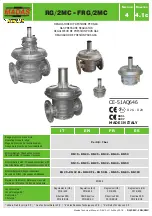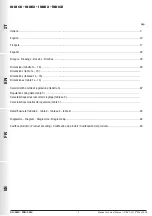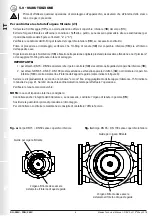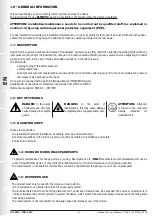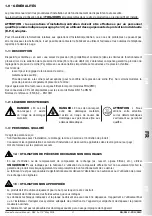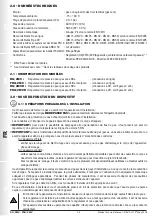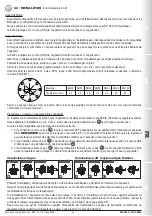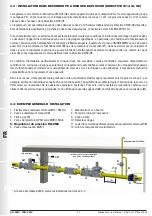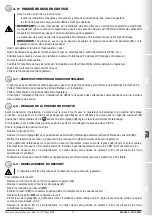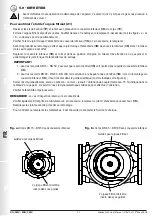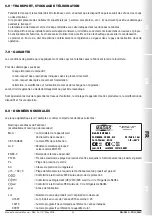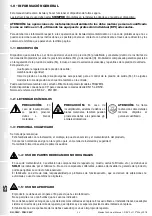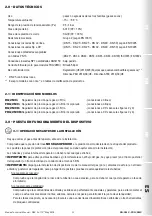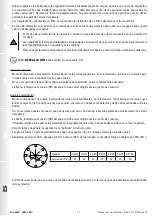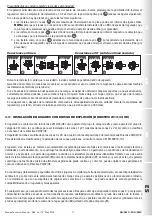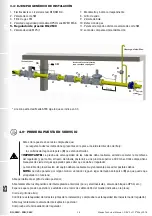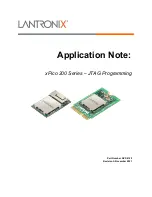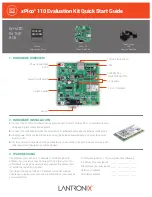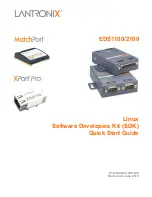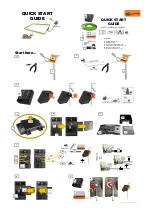
13
IT
EN
FR
ES
Madas Technical Manual
- REV. 0 of 10
th
May 2018
RG/2MC - FRG/2MC
1
2
3
4
5
6
8
9
7
7
10
11
piping
application
discharge in open air
internal thermal unit
non-hazardous ventilated zone*
external roof
12
3.4 - GENERIC EXAMPLE OF AN INSTALLATION
1. M16/RM N.C. Manual reset solenoid valve
2. SM jerk ON/OFF valve
3. FM gas filter
4. OPSO series MVB/1 MAX shut off valve
5. RG/2MC pressure regulator
6. MVS/1 relief valve
7. Pressure gauge and relative button
8. Vent valve
9. Ball valve
10. Gas detector
11. SM remote jerk ON/OFF valve lever control
12. Expansion joint/anti-vibration mount
3.3 - INSTALLATION IN PLACES WHERE THERE IS THE RISK OF EXPLOSION (DIRECTIVE 2014/34/EU)
The regulator complies with Directive 2014/34/EU as a device of group II, category 2G and as device of group II, category
2D; consequently, it is suited for installation in zones 1 and 21 (besides zones 2 and 22) as classified in Annex I of Directive
99/92/EC.
The regulator is not suited for use in zones 0 and 20 as defined in the aforementioned Directive 99/92/EC.
To determine the qualification and size of the danger zones, please refer to standard IEC EN 60079-10-1.
If the device is installed and serviced in full compliance with all the conditions and technical instructions provided in this
document, it does not pose a source of specific hazards: in particular, under normal operating conditions, the regulator emits
a flammable substance into the atmosphere ONLY if both the working membrane (
9
) and the safety membrane (
7
) malfunction:
in which case (and only if so), the regulator constitutes a source of emission of explosive atmosphere of continuous degree
and, as such, it can generate danger zones 0, as defined in Directive 99/92/EC.
In particularly critical installation conditions (unattended areas, poor maintenance or poor ventilation) and especially if there
are potential sources of ignition and/or hazardous equipment near the regulator in regular operation, as they may generate
electric arcs or sparks, a preliminary assessment of the compatibility between the regulator and such equipment must be
carried out.
In any case, every useful precaution must be adopted so as to prevent the regulator from generating zones 0: for example,
annually verify regular operation, possibility of changing the degree of emission of the source or intervening on the external
explosive substance discharge. For this purpose the threaded hole of the top cover (
4
) can be connected to the outside (using
appropriate fittings and pipes) by removing the dust cap (
6
).
* if the zone is ATEX classified follow that indicated in 3.3
5 DN

